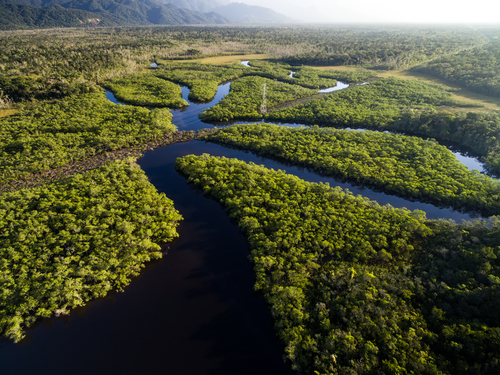The Department of Airspace Control (DECEA) is soon to implement new UAS traffic management (UTM) concepts based on the organization’s remotely piloted aircraft systems (RPAS) AirSpace Access Request System (SARPAS) aimed at the eventual integration of manned and unmanned aircraft in a single volume of airspace. A roadmap and schedule for such developments will be announced probably later this year by DECEA.
Brazil has currently about 34,000 civil UAS registered with the SISANT/ANAC (see below). 65% of which are for recreational and 35% for commercial use. Most registered operators are individuals, with only 6% of those being companies, or legal entities. Around 40% of the total number of UAS are based in Sao Paulo, while another 15% are based in Rio de Janeiro. Informed industry and market analysts, however, estimate that the actual total number of UAS in Brazil is closer to 100,000, mainly model aircraft types.
Since its release in late 2016, SARPAS/DECEA has processed around 37.000 airspace access requests, 75% of which have been processed automatically, with a notification confirmation note being sent to operators immediately, and 17% within two days, with only 8% of all the cases requiring the issuance of a NOTAM.
The initial focus for civil aviation regulators has been on developing legislation and platforms for the registration and control of access to airspace by UAS, mainly small UAS at very low level. So far, say the authorities, there have been only a few non-fatal airspace violations and incidents reported to law enforcement agencies.
Brazilian regulators and industry are following closely the latest developments in unmanned traffic management, both UTM in the USA and U-Space in the European Union, recognizing the need for and the importance of standards for a concept of operations and for initial service elements, like data exchange, e-identification/authentication, geo-fencing, collision avoidance and separation management.
Although the first UAS-related aeronautical circular and supplemental instruction was issued by the respective local air traffic control and civil aviation authorities in 2010 and 2012, it was not until 2017 that Brazil completed a triad of UAS regulations for model and civil, commercial remotely-piloted aircraft systems.
The registration and airspace authorization processes currently entail the following entities and steps:
- ANATEL, National Telecommunications Agency – for the registry of UAS models and radio transceiver technical data via its web-based SCH (Certification and Homologation System). As a rule, “all UAS shall use restricted radiation radio-communications spectrum, modulation techniques and power levels, so as not to interfere with any public or private telecommunications services. Exceptions are handled on a case by case basis. ANATEL participates at ITU/WRC, ICAO/ACP and other relevant regional regulatory bodies.
- ANAC, the National Civil Aviation Agency – for the registry of UAS operator, aircraft serial number and specifications with its web-based SISANT (Unmanned Aircraft Registration System) for small, Class 3 UAS, with weight in the 250 gr to 25 kg range. Class 3 is restricted to 400 ft AGL, VLOS and day-light ops, with no Airmen Certification Standards, or AKT, being required for pilots of commercial or model aircraft, operational waivers being applied for, reviewed and approved on a case by case basis. Rule RBAC-E94, General Requirements for Civil Use Unmanned Aircraft, applies across the board to all aircraft classes, Class 2 (25-150 Kg) and Class 1 (> 150 Kg) to be type-, airworthiness- and pilot-certified hereunder, as per applicable rules.
- DECEA, Brazilian Air Space Control Department – for the filing of requests for airspace access authorization, aircraft, pilot and flight plan data with its web-based SARPAS (RPAS AirSpace Access Request System), following rule ICA 100-40, Remotely Piloted Aircraft Systems and Access to Brazilian Air Space, and other relevant aeronautical circulars applicable to model, public and public safety and civil defence unmanned aircraft. SARPAS already includes a significant level of LAANC-related functionality and capabilities, to the extent its logic analyzes requested flight heights and distances from airports and heliports nationwide, allowing for a great percentage of all requests to be processed automatically, or within two to 18 days by the respective Regional Unit ATC analysts. It should also be noted that certain aerial survey or digital mapping operations require, additionally, a special flight permit from the Brazilian defence ministry.
Brazil’s UTM system is being developed within the framework of its SIRIUS Programme, similar in concept to the USA’s NEXTGEN and the EU’s SESAR, under which several actions have already been implemented to provide Brazilian skies with performance-based navigation (PBN) routes, remote aerodrome flight information service (AFIS/R-AFIS) and tower (R-TWR), controller-pilot data link communications (CPDLC) in the Atlantico ATC centre and automatic dependent surveillance–broadcast (ADS-B) operations in the Campos Bay area, in support of oil and gas offshore aviation.
Technological updating and enhancement of the Aeronautical Telecommunications Network (ATN), along with other technologies and concepts are being undertaken within the framework of the ICAO Aviation Systems Block Upgrade (ASBU) programme.
Brazil is the world’s eighth largest economy, with a total population of 210 million inhabitants, 8.5 million square km of land area and 3.6 million square Km of EEZ waters. Its vast agricultural areas, oil and gas reserves, forest resources and unmatched biodiversity, along with country-wide critical infrastructure networks, are a yet largely unexplored, enormous market for UAS-based commercial aerial services, in different application domains, mission and capability scenarios.
by Eduardo de Vasconcellos, Director RPAS Ops Consulting, and Cap. Leonardo Haberfeld, RPAS Committee DECEA, Brazilian Air Space Control Department.




